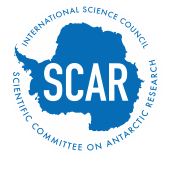|
Name ID: 109247
Place ID: 6165
separated from Wilkins Coast by Stefansson Sound, was photographed from the air on 20 December 1928 by Wilkins, who reported it as part of continental Antarctica in c. 71 S, separated from what is now Palmer Land by what is now Stefansson Sound (q.v.); shown extending indefinitely to E and W and named Hearst Land, after William Randolph Hearst (1863-1951), American newspaper publisher and editor, who supported Wilkins' expedition financially (Wilkins, 1929, p.367-68, Fig.33, p.369 and map facing p.374). This name was later applied to areas of widely varying extent ([referring to land immediately S of Wilkins' Stefansson Strait] Brown, 1929, map p.102; [mainland in 72 30'S] NGS map, [1932]; [mainland S of 71 S] BA chart 3175, 7.vii.1933; 1948, p.18; [mainland in c. 71 45'S] Hansen, atlas, 1936, chart 1; [in c. 71 S, between 60 W and 77 W, and including S Alexander Island and mainland S of Charcot Island] Joerg, 1937, map facing p.444; [mainland in c. 70 40'S] Germany. OK chart 1061, 1938; [in c. 71 30'S and including S Alexander Island] BA chart 3175, 1.iii.1940; [in c. 71 45'S, between 59 W and 73 W, and including S Alexander Island] Stocks, chart, 1941; [mainland E of George VI Sound in c. 72 S] USAAF chart [LR-74], 1942; [mainland in c. 73 S, between 60 W and 67 W] Ronne, 1945, map p.14; [Palmer Land between 71 S and 72 S] USHO chart 5411, 1946). Terre Hearst (Zimmermann, 1930, map p.347). Terre de Hearst or Terre d'Hearst, recorded as the name given by Wilkins to the Antarctic Peninsula which he believed to be an island (France. SHM, 1937, p.400-01). Tierra de Hearts [sic], for area on either side of George VI Sound (Rodriguez, 1941, map p.10). The feature photographed by Wilkins was rephotographed from the air and surveyed from the ground by USAS in September-December 1940, but was not recognized as Hearst Land since it was found to be an island; it was called Wilkins Island after Sir G.H. Wilkins (Wilkins Coast, q.v.) (USAAF chart [LR-74], 1942; [Hinks], 1943, p.30; USHO, 1943, photograph facing p.272). At the same time the name Hearst Escarpment (q.v.) was applied to a feature SW of Cape Collier. Tierra de Hearst, in 71-72 S 75 W (Argentina. IGM map, 1945). Isla Wilkins (Argentina. IGM map, 1946). Wilkins Öy (Hansen, chart [no number], 1947). Subsequent comparison of Wilkins' photographs with USAS photographs proved that Wilkins' Hearst Land and USAS's Wilkins Island referred to the same feature, which was renamed Hearst Island (USBGN, 1947, p.176-77; USHO chart 2562, 1947; Bertrand and others, 1948, Figs. 2 and 3, p.484 and p.485-86; Mason, 1950a, map facing p.151; BA chart 3175, 12.xi.1954; APC, 1955, p.11; DCS 601 sheet 69 62, 1955). The island was re-surveyed by FIDS-RARE from "Stonington Island" in November 1947. Hearsland [sic] (Mann Fischer, 1948, maps facing p.316). Tierra José Miguel Carrera, referring to Wilkins' original Hearst Land after José Miguel Carrera (1786-1821), a leader of the Chilean independence movement (Orrego Vicuña, 1948, p.197 and end map). Zemlya Khersta, referring roughly to Palmer Land (Aleksandrov, 1949, map p.26). Hearst-Øya (Rønne, 1950b, p.130). IÎle Hearst (IHB chart B' scr , 1952). Wyspa Wikinsa (Machowski, 1953, map p.84). Isla Hearst (Argentina. MM, 1953, p.327; Chile. IHA, 1974, p.150). Ostrov Uilkinsa (Baranov and others, 1954, map p.283). Hearst-Insel (Kosack, 1955a, end map). Ostrov Khersta (Aleyner, 1955, p.84). T. Hearst (Lliboutry, 1956, map p.432). Hearstöya (Fuchs and Hillary, 1958c, map p.6-7). Isla Hearts [sic] (Argentina. IGM chart 3789, 1958; Pierrou, 1970, p.419). Heartsv Ostrov (Bártl, 1958, map facing p.144). Ostrov Uilkinsa (Kherst) (Soviet Union. UNGSVF chart 334, 1958). Hearst (Wilkins) Island (USHO, 1960, p.336). Ostrov Kherst (Soviet Union. MMF chart, 1961). An aeronautical support base was established by AAE, 1964-65, for temporary occupation in 69 26'S 62 10'W on the ice cap near the centre of the island.
|

